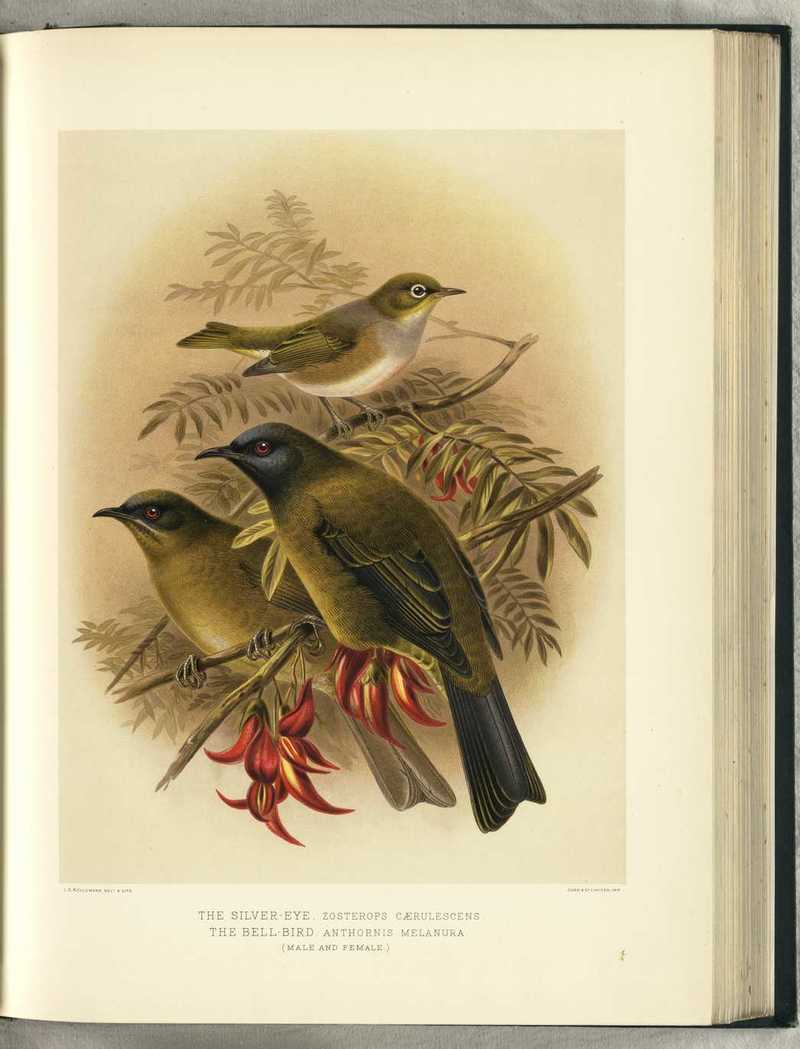|
| Query: bird | Result: 2304th of 32675 | |
Silvereye (Zosterops lateralis), New Zealand bellbird (Anthornis melanura)
| Subject: | Silvereye (Zosterops lateralis), New Zealand bellbird (Anthornis melanura)
| | Poster: | Wiki Photos (---@---.---)
| |

| Resolution: 1045x1370
File Size: 112628 Bytes
Upload Date: 2022:09:11 11:14:27
|
THE SILVER-EYE, Zosterops cærulescens = Silvereye (Zosterops lateralis)
THE BELL-BIRD, Anthornis melanura (male and female) = New Zealand bellbird (Anthornis melanura)
Zosterops lateralis, Anthornis melanura
Original caption: "Silver-eye, Zosterops cærulescens. Bell-bird, Anthornis melanura (male and female)."
English: Illustrations of (top) Silver-eye and (bottom) male (right) & female (left) Bellbirds.
Date Published 1888
Source New Zealand Electronic Text Centre
Author By J. G. Keulemans(John Gerrard Keulemans), in W.L. Buller's A History of the Birds of New Zealand. 2nd edition. Published 1888.
Source: https://commons.wikimedia.org/wiki/File:Bul01BirdP009.jpg
THE SILVER-EYE, Zosterops cærulescens = Silvereye (Zosterops lateralis)
The silvereye or wax-eye (Zosterops lateralis) is a very small omnivorous passerine bird of the south-west Pacific. In Australia and New Zealand its common name is sometimes white-eye, but this name is more commonly used to refer to all members of the genus Zosterops, or the entire family Zosteropidae.
THE BELL-BIRD, Anthornis melanura (male and female) = New Zealand bellbird (Anthornis melanura)
The New Zealand bellbird (Anthornis melanura), also known by its Māori names korimako, makomako, and kōmako, is a passerine bird endemic to New Zealand. It has greenish colouration and is the only living member of the genus Anthornis. The bellbird forms a significant component of the famed New Zealand dawn chorus of bird song that was much noted by early European settlers. |
^o^
Animal Pictures Archive for smart phones
^o^
|
|